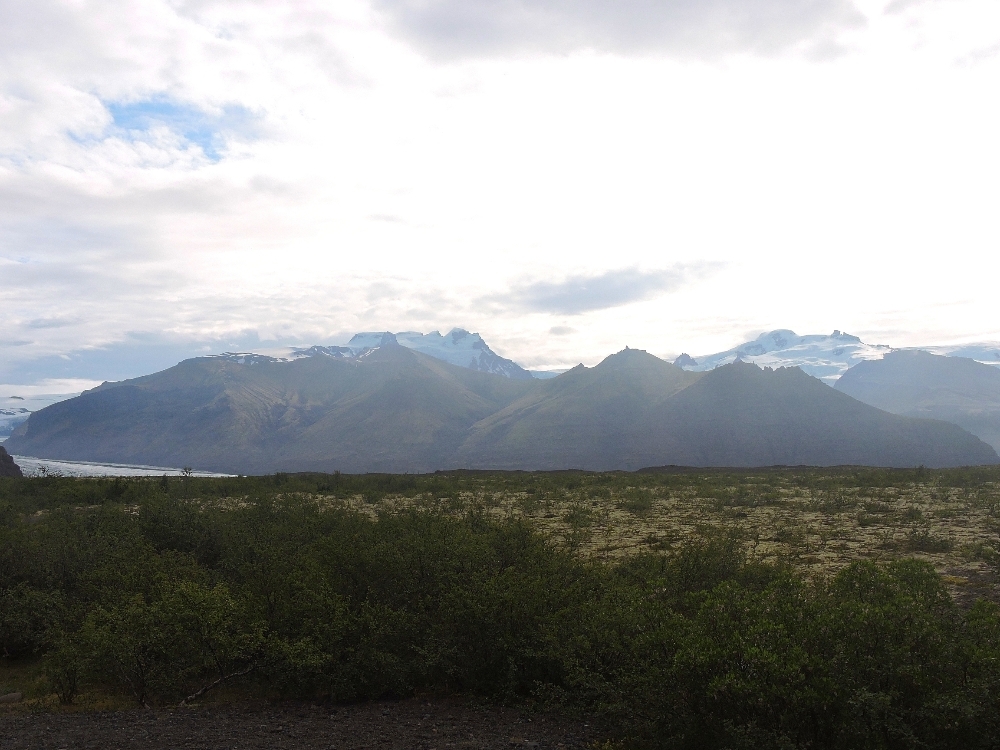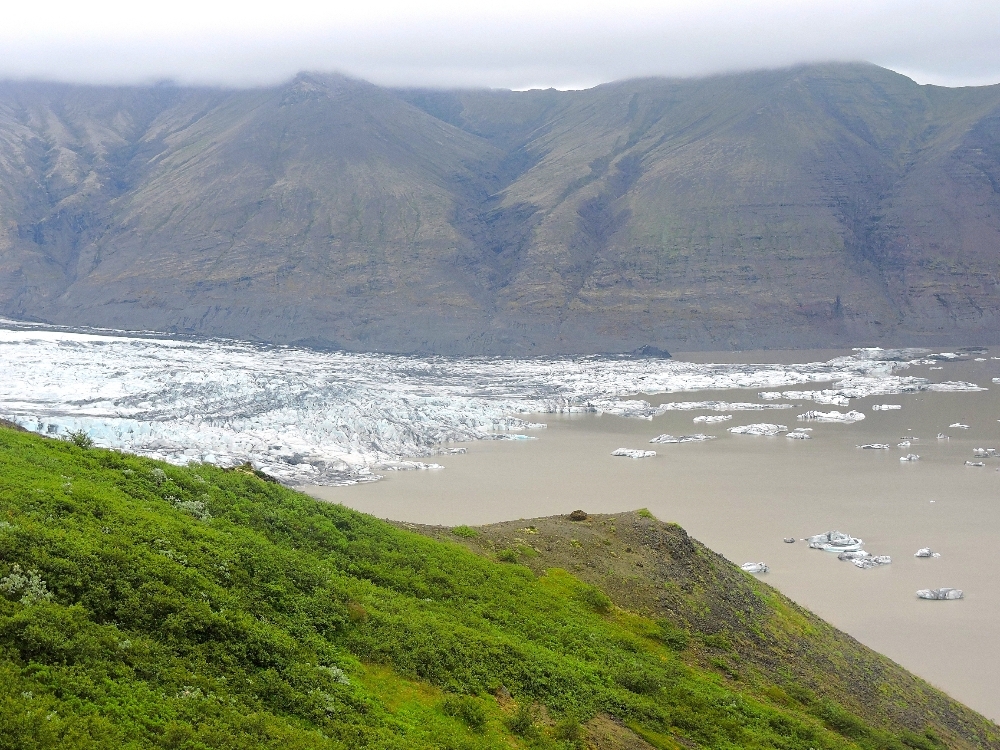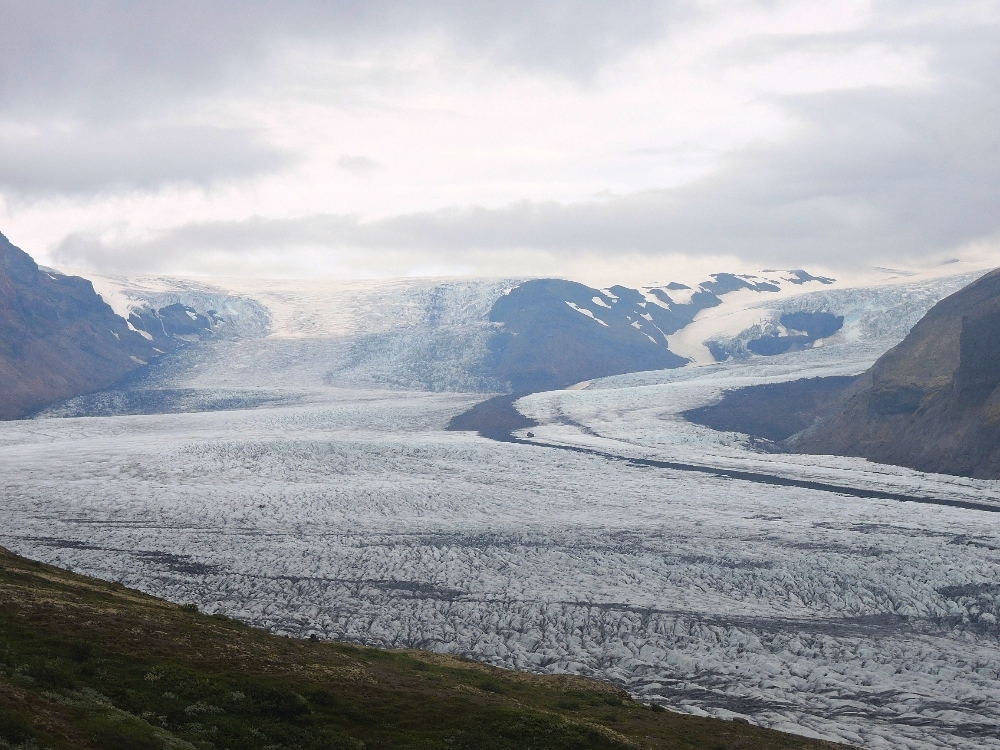Iceland had two World Heritage sites when I arrived in the country, and three when I departed, and I managed to see them all.
The first of these on my route, Thingvellir, is contained in a National Park, the oldest in the country, not far from Reykjavik, and is a mixed site with both natural and cultural components. I had planned on visiting the site on the first cycling day of this section, as I headed north from Reykjavik. However, there was a threat of rain that day, and I decided that since I would be passing by again after visiting the Westfjords, I would postpone my visit until later, with hopes of better weather. Of course, the rain on that first day never really came about, and, after generally pleasant skies during the days I was in the north, rain returned as I approached the site for the second time, and at that point I had to make my visit anyway.
The natural aspects of the site were probably of more interest to me, because the Park is one of the few places on Earth, most of which are in Iceland, where it is possible to stand in the rift zone of the Mid-Atlantic Ridge. In the northern hemisphere, areas to the west of the rift, where I spent most of the time during my stay, are part of the North American Tectonic Plate, while those to the east lie on the Eurasian Plate. Iceland is usually considered to be part of Europe, but I suggested to a few people that they should actually think of themselves as half in North America, and half in Europe. I am not sure that particular idea will gain much traction, however. In any case, I was very interested in seeing, and cycling across the rift. I had thoughts of taking a photo of the bike with one wheel in America and the other in Europe, but I was somewhat surprised at just how wide the actual rift was. Most of the Park’s trails run along the sharp rock face that marks the edge of the American Plate, and the similar wall on the European side, which seemed somewhat smaller at that location, is around five kilometers further east. So, while I was not able to get that photo, I did enjoy cycling from one plate to another in ten or twenty minutes time. I had plans to see the rift zone again, further east, and up in the highlands, several days later, but I was forced to skip that section of the route, unfortunately. So, I am glad that I had my one and only chance to ride the rift at this WHS, even if it was during a drizzly rain.
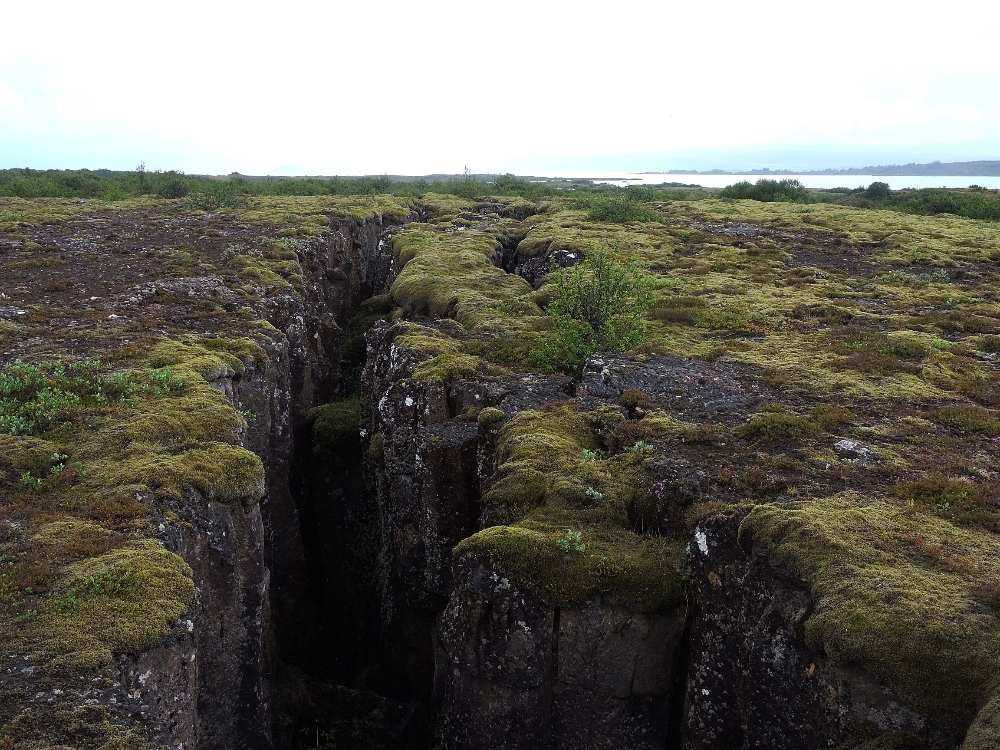
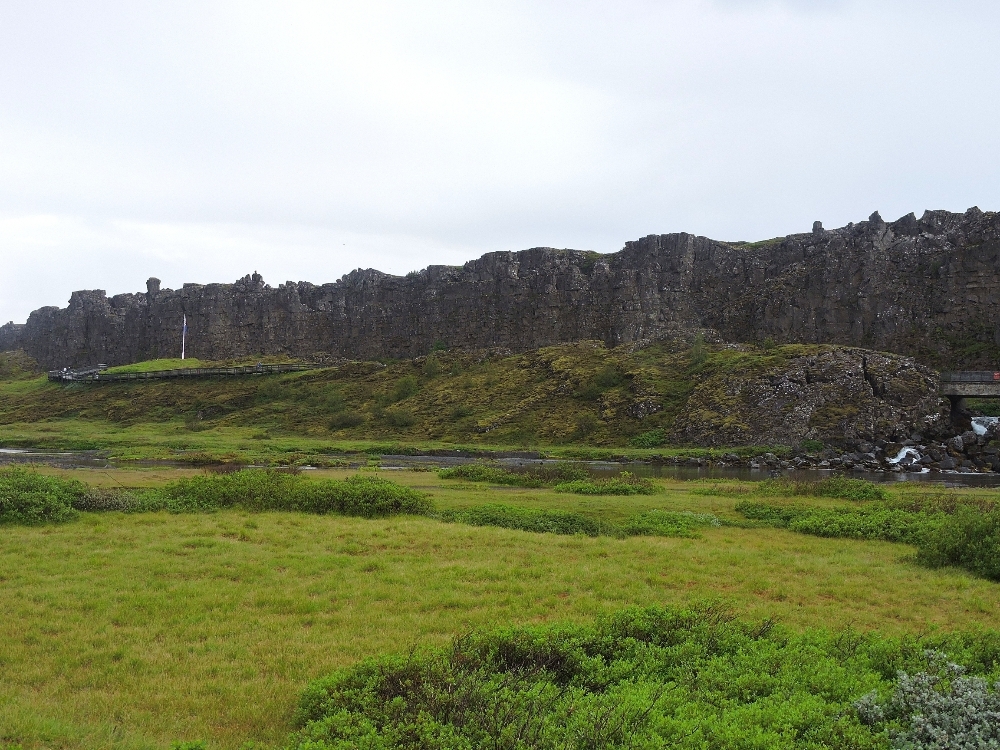
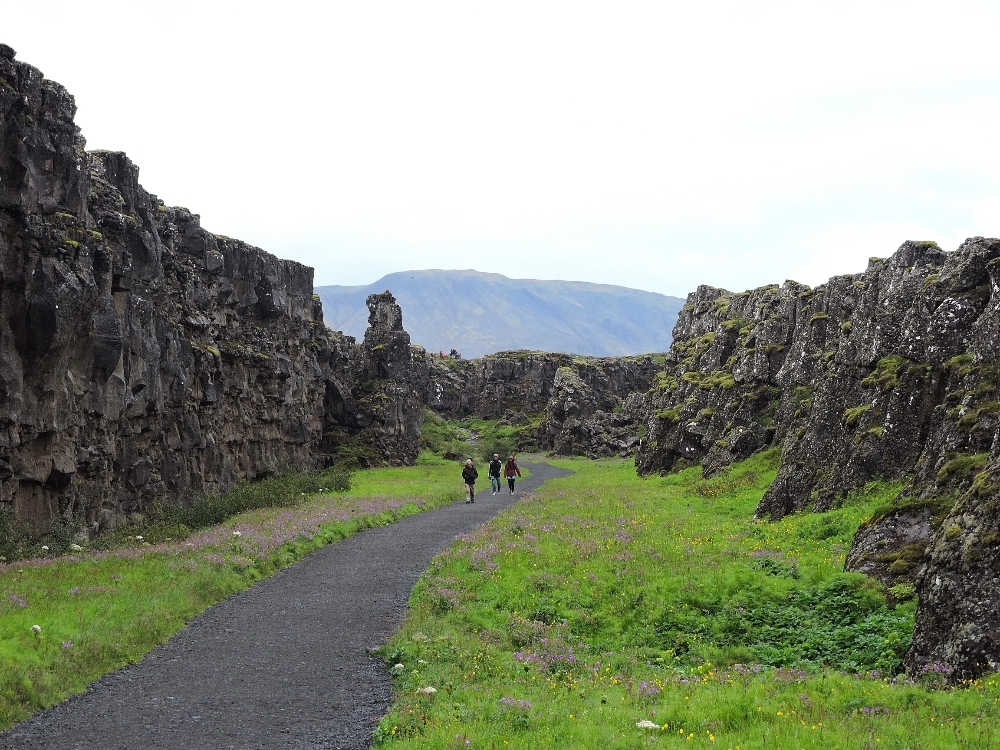
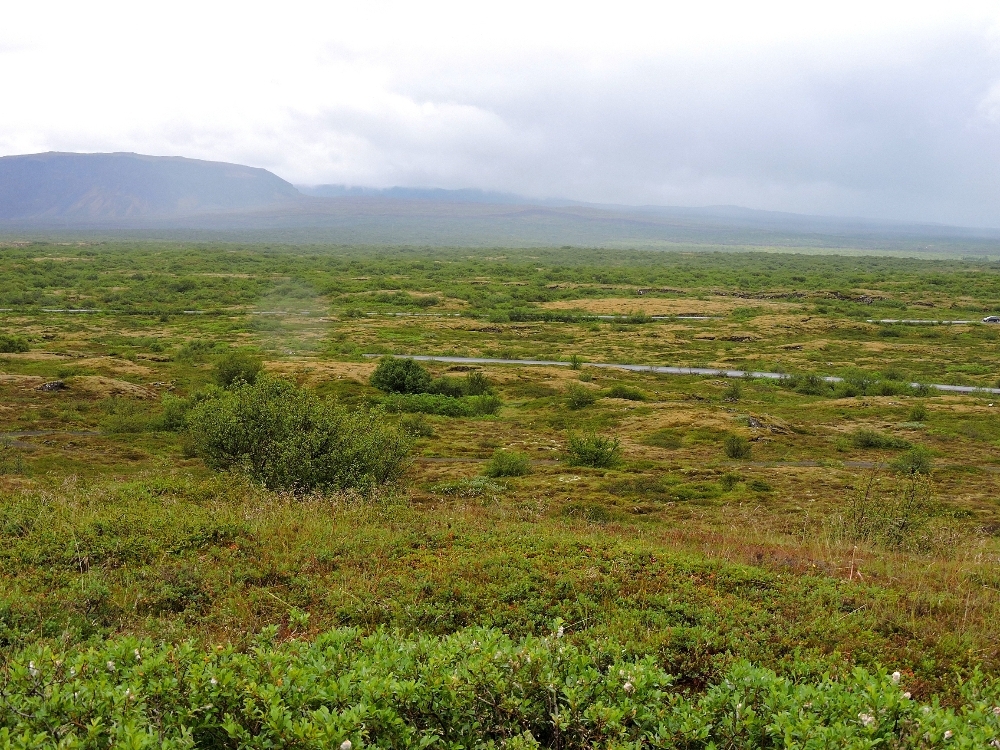
The cultural component of the Thingvellir WHS commemorates the Althing, considered to be the World’s oldest parliament, which was in existence over a thousand years ago, at a spot within the Park. Apparently, the people of Iceland would gather annually at a specific location, adjacent to the American Rift Wall, where laws would be read aloud to the population. There was no Parliament building as we think of it today at that location, and these days all there is to see is a certain rock, marked with a flagpole, that is thought to be where this occurred. To me that rock seemed just like many others in the area, and was not really very exciting. However, I did see the exact place where such interesting events occurred so long ago, presumably, and that is always nice.
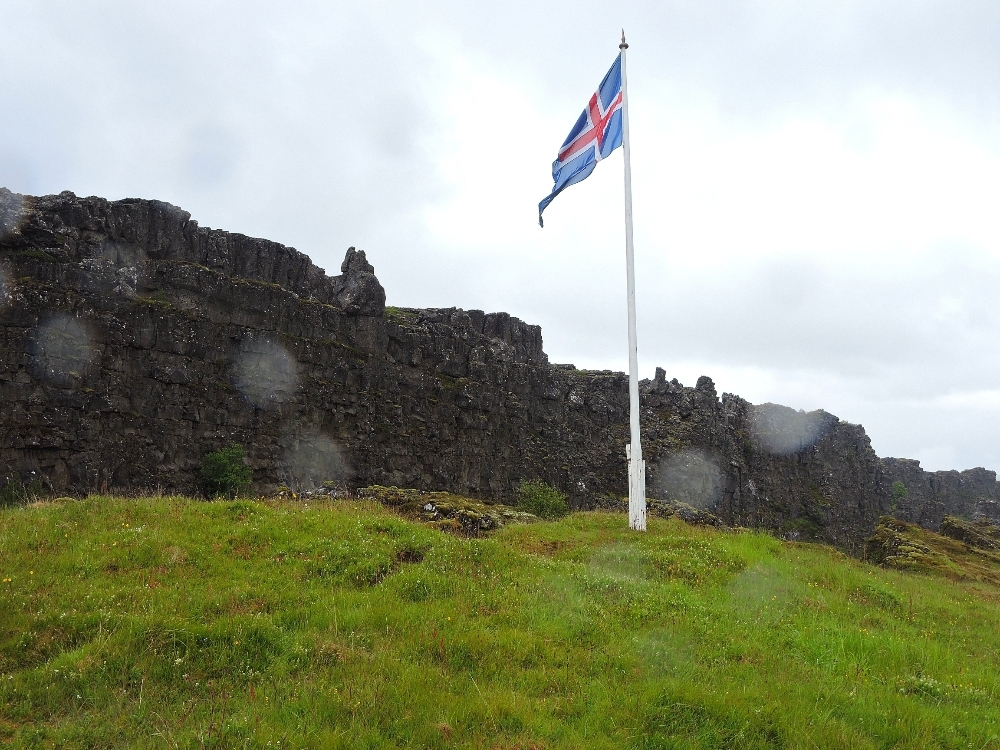
The third of the three sites I visited in Iceland was the one that was not on the List when I arrived. Vatnajokull National Park, one of Europe’s largest parks, one that occupies 14% of the entire surface area of Iceland, was created only about 10 years ago, by greatly expanding smaller parks that previously existed in a heavily glaciated volcanic field on the south coast of the country, just east of the rift zone. I intended on making a visit there from the time I originally plotted my route in the country, and I knew then that the Park was already on Iceland’s Tentative List for inscription as a World Heritage Site. I would have been interested in visiting in any case, but people who are more dedicated to the goal of visiting WHSs than I am know that it is a good idea to try to go to sites on the Tentative Lists, because many will one day be full WHSs, and by doing so, one can avoid the need for a return visit later on, should they eventually become inscribed. In my case, the issue became irrelevant, thanks to some fortuitous timing. I expected to arrive at the park on a Wednesday, which would give me a full day to see some of the Park, and, as it turned out, the annual World Heritage Conference, where potential new sites are discussed, debated, and some are added to the list was already in underway for 2019 in Azerbaijan. Happily, Vatnajokull was inscribed on the List on the Sunday before I visited! I gave my congratulations to some of the Park’s staff I met, and they all seemed very proud of their Park’s newly increased status.
However, my visit was potentially troubled thanks to the foul-weather delay I experienced in Vik, so I wasn’t able to arrive on Wednesday, as I had planned. Instead, I only reached the park on Thursday evening, with a return to Reykjavik required on the following day. Fortunately, I was saved by the Midnight Sun Effect,
and I had plenty of time that day to take a leisurely hike at one of the Park’s main attractions. Namely, the Skaftafell Glacier, one of the most popular tourist sites in the area, which flows south from the nearby volcanic range, draining its meltwater into the Atlantic Ocean. For such a large park, that was only a scratch on the surface, but given the circumstances, that was the best I could manage. I did enjoy the Park, but would have preferred to also had time to see some of its areas in the highlands, which possess some impressive volcanic artifacts and scenery.
